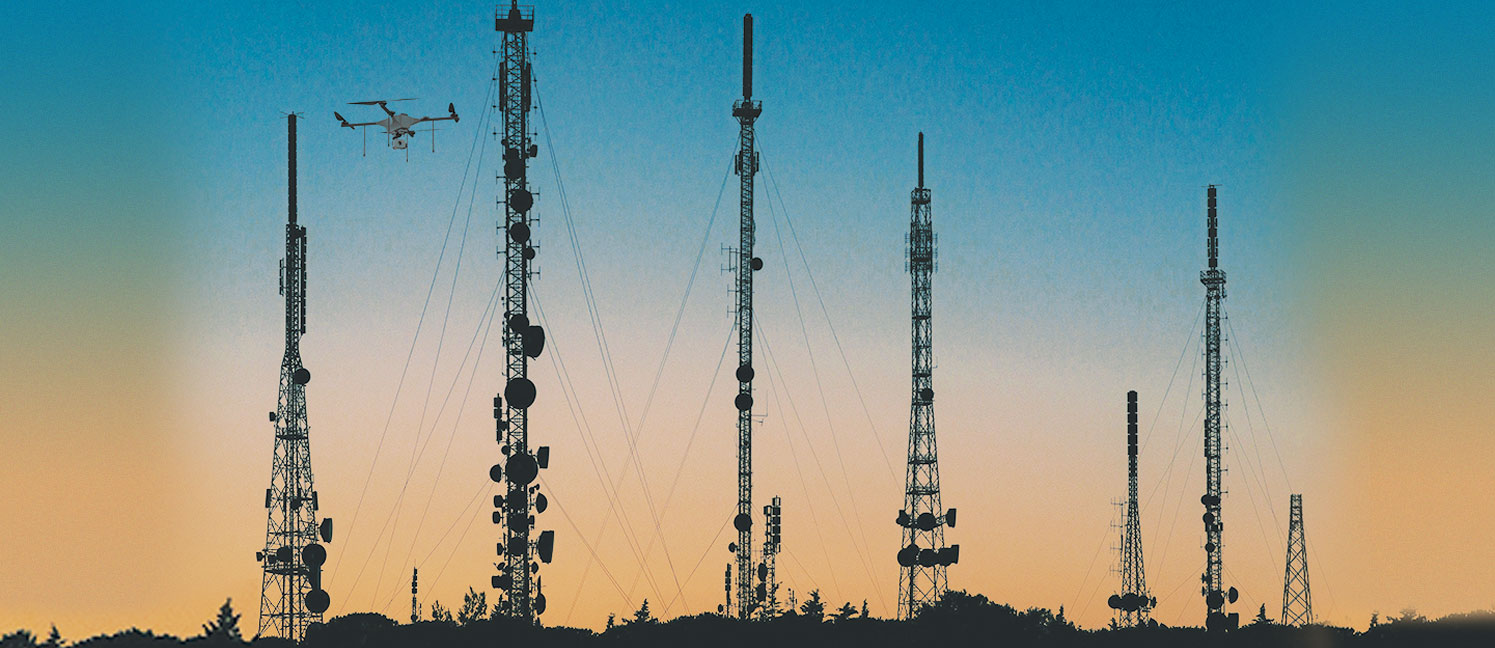Drone Technology: Bringing Tangible Benefits to the Telecom Sector
The telecommunications sector has seen tremendous technological advances over the past few decades, with mobility, broadband, and internet services growing in capability and reach across the globe. The global telecom industry is more than $1.5 trillion in size and growing rapidly to meet increasing consumer data demand.
Multiple trends are reshaping the operating environment for telecom companies of today and driving urgency to digitize core operations, respond faster to change, and leverage data to boost visibility, insights, and value generation.
Factors reshaping the operating environment for telecom companies
- 5G Technology: With 5G rollouts, the network architectures have evolved and has become more complex than ever, the upgrades have become frequent, and the pace at which it takes place has increased as well, thus it is important for the telecom players to have a reliable real-time visibility of the quality of their network assets.
- New Business Models: Telecom leaders are actively seeking various revenue sources such as renting available space on existing tower assets. To leverage the distributed nature of tower sites to make these new business models work, tower companies need to possess a view of the available space, asset quality and a continuous view of the relevant assets.
- Market Pressure: Telcos are looking for ways to improve the efficiency of their operations and maintenance workflows and translate the same to cost and time savings. Digitization of maintenance records, compliance records, and having an accurate assessment of site conditions for maintenance planning are essential.
- Shortage of Skilled Personnel:The traditional method of collecting data about equipment and conditions at a tower site has its disadvantages – such as injury risks, manual workflows and potential data integrity problems. This raises demand for skilled personnel who are in acute shortage.
The importance of having an up-to-date view
For telecom tower companies, the key is to obtain a comprehensive, real-time view of what is going on at each structure. Fast access to timely, accurate tower data (for example, measurements precise enough to feed CAD applications) has a massive upside. Having a better window into onsite conditions can boost efficiency, leading to optimized maintenance schedules, for example. It can improve revenue reassurance, since real-time tower audits will disclose exactly what equipment a carrier has installed and whether that equipment should trigger contract escalators. Further, it enables companies to leverage the data to seize new business opportunities.
The best way to gain a comprehensive, real-time view of each tower is to create a service image or digital twin— a dependable set of data points providing end-to-end visibility across tower company or telco infrastructure unit assets.
Drones enabling transformation
Drones, equipped with cameras or LIDARs, can collect high resolution, accurate, digital data thereby creating a digital twin / as-built model of a tower site. Digital data collected by drones can be processed using photogrammetry software and AI algorithms than can interpret the data and provide detailed information about installed equipment, and condition of the tower, and surrounding site area. Utilizing drones in tower inspections can reduce the amount of time required at a site by the inspection team and enhance the level of safety of operations.
Telecom companies worldwide are utilizing or exploring drones as part of their digitization strategy – to increase accuracy, transparency, and collaboration in their operations.

Transparent Access to Digital Information
For telecom companies, access to an accurate, as-built, 3D digital twin of each tower site can boost utilization efficiency, help conduct thorough inventory audits with documentation, and enhance asset management thanks to the end-to-end visibility. Having a single view of an asset across different project teams increases transparency, collaboration and possibility of remote project management.
A digital record of a tower site captured using drones is a also precursor for automated AI analysis. AI algorithms can identify the type, brand, and model of installed equipment; evaluate the location and severity of corrosion; and detect missing / broken tower members. It allows operators to schedule site visits more efficiently, resulting in a reduction in maintenance costs. A digitally documented record of a tower site also serves as a baseline to compare future changes.
Efficiency & Safety of Inspections
In typical base station site completion inspections, an engineer climbs the antenna tower on which the base station is installed and visually inspects the equipment. However, these inspections raise several concerns regarding safety, the time required to carry out the inspections and personnel costs. By using drones equipped with cameras, completion inspections can be conducted from the ground in a shorter amount of time, more efficiently, and with a higher degree of safety.
Further, drones can be used for damage assessment of towers and critical infrastructure after a natural disaster, while keeping people out of harm’s way.
Network Optimization
A digital twin of a telecom tower created by drones can be automatically analysed to obtain and verify the position and orientation of antennae on the tower, which is useful for network optimisation and debugging purposes. Drones equipped with appropriate RF detectors can also be used to capture and map 3D radiation patterns around a tower for signal optimisation as well as environmental compliance purposes.
As drone technology, sensor technology, and data processing/analysis techniques improves, the scope of utilization of drones in the telecom tower industry will keep growing and ultimately be a vital component of the digital transformation of the industry.


